My first stop on this early 2010 trip is Hanoi, Vietnam, and after spending 4 full days there I still am not sure what to make of the place. The wildcard is the upcoming Tet holiday – the lunar new year – which I’ve been told is like our New Year, Thanksgiving, and 4th of July all rolled into one. Evidently it’s a huge family holiday, but with plenty of superstitions and rituals mixed in, so in the days and weeks before the big day (which falls on February 14 this year) everyone is scrambling around at a fever pitch.
I hear they have to buy certain things, like new shoes for good luck in the new year, as well as various decorations and food items to prepare for the big holiday. And raising prices to try to accumulate more money for Tet is accepted and normal.
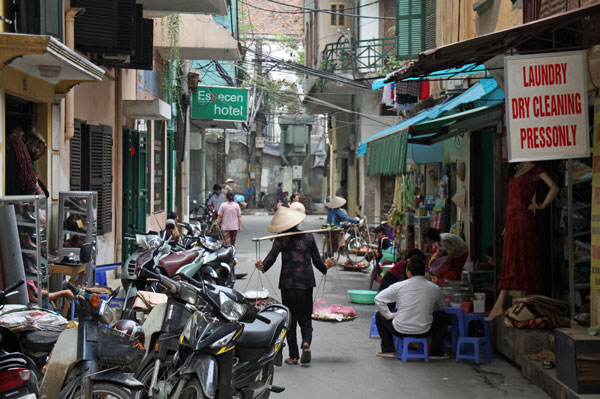
So I got to Hanoi about 10 days before Tet, and the city feels like a complete mad house to me, with people racing around in every direction at all hours of the day. The problem for me is that I don’t know if that’s close to normal or quite unusual. As I write this I’m in the mountain resort town of Sapa and it’s quite mellow here. When I get back to Hanoi on Friday morning it’ll be 2 days before Tet begins, and I’m told that by Saturday most everything closes down and the city becomes a ghost town for at least 3 or 4 days. I purposely timed it to leave this week and then see the place again during this “ghost town” phase, but once again I’ll have no idea what normal days are like.
After all the craziness I’ve seen, I feel like I owe it to myself to see the nearly empty version of it, even though I’ve been told it might be a minor struggle to find places to buy food and drinks, at least at normal prices.
Hanoi for me so far
I’m staying in the Old Quarter, which is the historic district full of interesting architecture (though admittedly a bit run down as well), and the traffic of infinite motorbikes and a few cars mixed in makes it feel like pandemonium at every hour of the day. Old timers say that 15 years ago it was 50 bikes to one motorbike, and now it’s pretty much the exact opposite ratio.
The only pedestrians are my fellow tourists, and the occasional woman carrying two balanced trays of local produce. Aside from that, it’s almost 100% motorized vehicles, nearly all of those being motorbikes. The thin sidewalks in the Old Quarter are used as motorbike parking, so walkers have to walk right with the traffic in the street. It doesn’t really feel dangerous, until you have to cross the street.
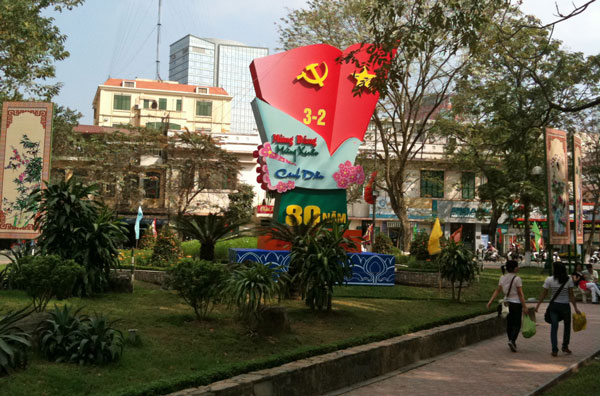
I had heard and read about this before so this wasn’t surprising, but it’s still amazing to see in person. There is literally no traffic control (stop lights, stop signs, traffic cops) of any kind in the Old Quarter, so motorbikes just drive ahead and carefully weave through cross traffic or other obstacles (like pedestrians). If you wait for a break in the traffic to cross you might be waiting all day, so the key is to just wait until stepping out a few steps looks safe, and then go. After that you stare into traffic and move forward a step or two at a time. The key is to NEVER step backwards, as drivers are used to people crossing this way and they’ll drive around you as long as you move in a predictable pattern.
In a way it’s fun, but in another way it’s stressful and terrifying. I’ve been told that an average of 5 people die in traffic in Hanoi each day, though I have no way of confirming that stat. It’s a city of 6 million people so on any given day the odds are with you, but still this is a terrible and uncivilized system that seems to have gotten this way incrementally so no one involved ever noticed it because it came on slowly to them. In a way it makes me really appreciate European-style planning. If they saw something like this coming they’d make motorbike licenses hard to get and build streetcars and buses to carry people around.
The food is great, and cheap
I’ve always liked Vietnamese food, which is one reason I wanted to come here. The signature dish is pho, which is a soup with rice noodles and vegetables, plus beef, pork, or chicken if you please. It’s served at all hours of the day, and evidently is most popular for breakfast. You can get a modest bowl of the stuff at a sidewalk stall on nearly any block in the city for around US$1, but that means eating it while sitting on a tiny plastic stool surrounded by locals staring and laughing at you. Fortunately there are plenty of small restaurants catering to Westerners, so for only a bit more money you can eat in surroundings that are more comfortable for tourists.
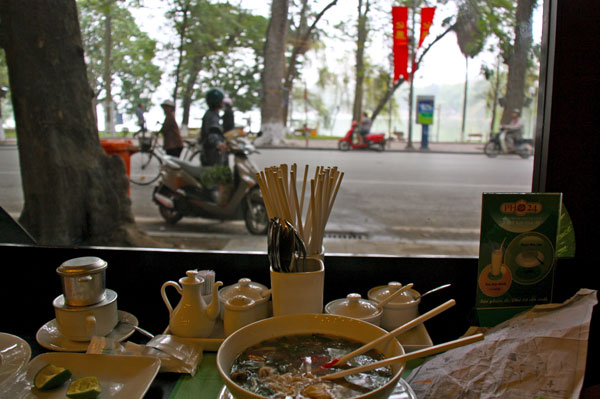
One restaurant that I went to did have dog on the menu, along with scores of non-canine options, but I hear that pet-eating is quite rare here and only practiced by a small minority of locals, and generally not only for poverty-related reasons. Also comforting to me is the fact that they seem to use pretty good cuts of meat in the meat dishes, at least the ones where tourists usually eat. I remember being in Hong Kong and when you’d order beef you’d get hooves or knuckles or various unidentifiable organs. Chicken in Hong Kong meant heads or that butt thing and whatnot. But here they serve desirable cuts that are exactly what you hope for.
Beer is cold and easy to find
At the top of my list of beverages to try is what they call “bia hoi” (fresh beer), which is served at sidewalk “cafes” around the city, with one famous corner in the Old City known as Bia Hoi Corner, since 3 of these places are famously competing facing each other. The downside is that you have to sit on those same tiny plastic stools, but particularly on Bia Hoi Corner, there are plenty of other tourists there so it’s not quite such an ordeal. So far I’ve only managed one glass of the stuff, and then they ran out for the day.
It seems that this “fresh beer” is brewed each day and then a single keg is served up at each place until it’s gone, usually starting around 4pm. The stuff is watered down and about 3% alcohol, but it’s also about 15 cents per glass, said to be the cheapest beer in the world. When I’m back in Hanoi I intend to drink more of the stuff.
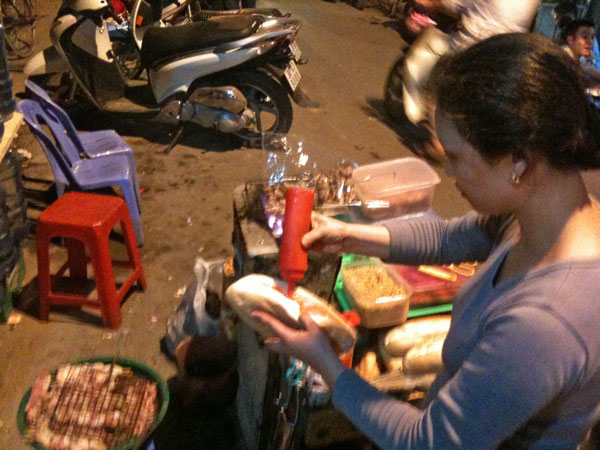
Aside from bia hoi you can get cold bottles of Tiger (from Singapore) and several other local lagers that are actually world class. Even in tourist-friendly restaurants you can usually find 500ml bottles for around US$1 so it really hits the spot in the oppressive heat and humidity.
General impressions of Hanoi
I’ve visited a few attractions and I’ll write about those in another post, so I’ll wrap this up with my overall impressions of the place. I had actually considered coming back to Hanoi to find an apartment and work for a month or two, but I really don’t think that’s going to happen. There are just too many things that are too frustrating about the place for an extended stay like that.
For one thing, I’m a bit surprised by how little English is spoken in Hanoi. I’m told it’s different in the south of the country, but this is the capital and center of communism, so as of 20 years ago there was virtually no tourism and a generally negative feeling toward Americans and most other Westerners.
Just as is true is many other parts of the world, people tend to speak just enough English to complete the financial transaction with you, be it at a hotel, restaurant, bar, or tour company. Beyond that it’s just about impossible to communicate, and if you do find a local who excels at English then they are definitely working up to a sales pitch of one kind or another.
Of course I realize that I’m in their country and I have no interest in learning Vietnamese, so this is my problem and not theirs. Still, their tourism industry can be greatly improved when more people can communicate with the visitors with money.
I mentioned the traffic chaos earlier, and that is another thing that would make a longer stay out of the question. I am fine walking longer distances even while others are driving, but in Hanoi it’s just not pleasant at all, especially the whole street-crossing lottery you have to enter every block.
I’m looking forward to experiencing the mellow version of Hanoi during Tet, but even then I’m sure it’ll be frustrating in different ways.
Still, as a tourist stop the place is exciting and exotic and the challenges feel worthwhile so far. I’ll be heading for a one-night trip to the famous Halong Bay next week, and then a train down to Vietnam’s cultural capital, Hue, which is also famous for being on the dividing line between north and south during what they call The American War.
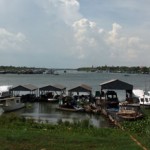
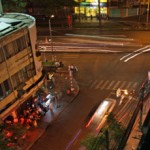

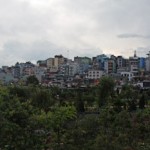
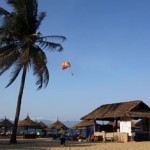
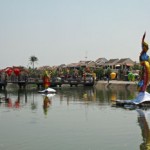
Hey! What is your current email? Everything I’ve tried
bounces.
– Jack Angel